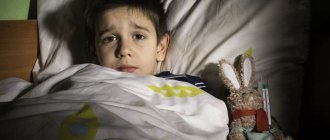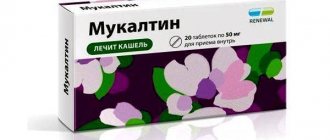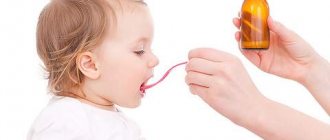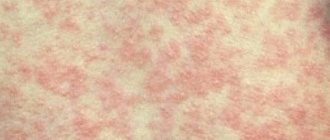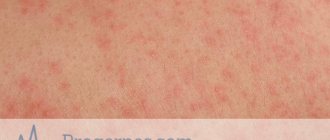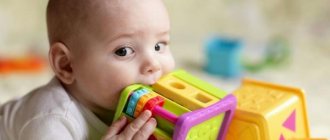The most difficult test for parents of a baby is a sick child. Especially if the disease is accompanied by attacks of intense coughing, reminiscent of a dog barking. In this article, we will consider what provokes a barking cough in a baby, why this reflex is dangerous, and what measures should be taken to eliminate it.
Reasons for appearance
Coughing is a protective reflex, which is a forced exhalation through the oral cavity, causing muscle contraction of the airways due to irritation of the receptors. The physiological purpose of a cough is to clear the respiratory tract of sputum, mucus and other irritating agents, as well as foreign bodies (food debris, small objects, etc.).
Depending on the nature and amount of discharge, a distinction is made between dry (non-productive) and wet (productive) cough. Children (usually between four months and three years old) often suffer from a dry, paroxysmal cough accompanied by sounds similar to a barking dog. This led to the name of the disease - barking cough.
Typically, this symptom accompanies viral pathologies of the upper/lower respiratory tract. A nonproductive cough is the result of inflammatory processes in the nasopharynx, larynx, trachea, bronchi or lungs. Since the baby’s respiratory organs are still imperfect - a narrow larynx, the entry of an infectious agent provokes swelling and inflammation, as a result of which thickening/swelling of the mucous membrane of the trachea and larynx is observed, leading to an even greater narrowing of the lumen of the respiratory tract.
As a result, breathing becomes difficult. In addition, the body, in an attempt to cope with the virus, releases exudate, further preventing the free passage of air. The receptors in the mucous membranes are irritated, which leads to a barking cough, hoarseness, nasal congestion, and increased body temperature (this symptom may not appear).
As a child grows, the lungs and airways develop. Dry cough appears less frequently.
Barking cough without fever: causes
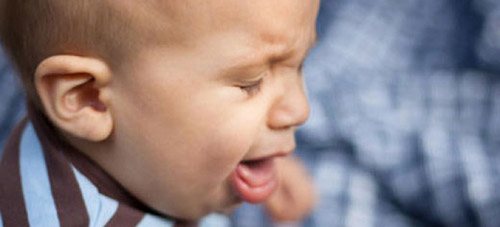
There are often cases when a dry cough appears, but other symptoms of the disease are not observed. Body temperature remains normal. In this case, we are talking about a non-infectious cough. Experts name the following reasons that provoke it.
Foreign bodies entering the respiratory tract
These could be: small toy parts, leftover food, pieces of bread. You should not give your baby small objects to play with, and it is also important to carefully ensure that there are no toys with small parts that can easily separate in the room or crib.
Symptoms depend on the size of the foreign body. A small object makes itself known by bouts of barking cough, sometimes with the appearance of purulent sputum, and difficulty breathing. In this case, you need to immediately turn the child onto his stomach and tap him on the back with the edge of your palm.
Large foreign bodies cause severe fear, blueness of the face, and wheezing. The baby becomes restless, rushes about, and within 2-3 minutes may fall into a coma. If not treated promptly, this can lead to death.
Allergic reaction
The body of a small child is characterized by increased sensitivity to external stimuli. An allergen can be animal fur, flowering plants, food, polluted air, cigarette smoke.
Dry air
Increased dryness of the air can also cause attacks of dry cough. Therefore, you need to regularly monitor this: ventilate the room, carry out wet cleaning of the room, and, if necessary, purchase an air humidifier.
Physiology
An infant under one year of age may develop a physiological cough caused by natural causes: it clears the airways. Neonatologists claim that such a useful reflex can be observed in infants up to 15-20 times a day. This is normal.
If a paroxysmal barking cough appears in children, immediate consultation with a doctor is indicated. Based on an examination and, if necessary, laboratory tests, the pediatrician will determine the cause of this symptom and prescribe appropriate treatment.
Inhalations for the treatment of barking cough
At home, you can get rid of dry coughing attacks with steam inhalation. The procedure is also carried out using a special ultrasound device - a nebulizer, which can be purchased at a pharmacy. Medicinal solutions poured into the device have anti-inflammatory, decongestant, bronchodilator, antibacterial and expectorant effects. The main components penetrate not only into the upper respiratory tract, but also into the lower parts of the respiratory system.
Inhalations using the following drugs help with coughing attacks in children:
- antitussive medications (lidocaine solution);
- anti-inflammatory drugs (Rotokan);
- antibiotics (Fluimucil);
- expectorant and bronchodilator combination drugs (Broncholitin, Ascoril);
- anticholinergics (Atrovent, Truvent, Troventol);
- adrenomimetics (Ventolin, Fenoterol, Berotek);
- methylxanthines (Theotard, Euphylong, Retafil);
- mucolytics (Mukolvan, Lazolvan, Ambrobene).
For children of primary preschool age and infants, it is better to prepare solutions based on medicinal plants:
Inhalations are performed for infants as follows:
- fill the bathtub with hot water (at this time the door should be tightly closed);
- add medicinal components to the liquid (vegetable oil, herbs);
- Bring your child into the bathroom for a few minutes.
It is important to pay attention to the temperature regime. It is determined depending on the age of the child:
- up to 3 years - no more than 30°C;
- 3-4 - no more than 42°C;
- 5-8 years - no more than 52°C.
Major diseases accompanied by barking cough
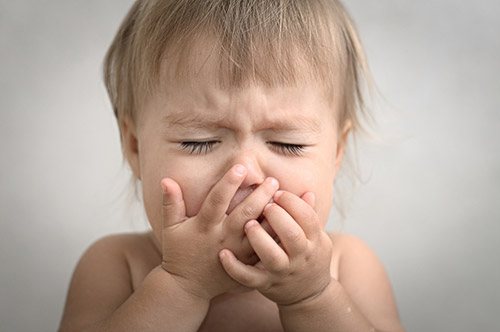
A barking cough in a child is most often a symptom of some kind of respiratory disease. Let's take a closer look at what diseases provoke a nonproductive cough.
Laryngitis
Laryngitis - inflammation of the mucous membrane of the larynx - is a common pathology in children under 3 years old, associated with the anatomical features of the body.
Provocateurs - viruses and allergens, as well as genetic predisposition, incorrect use of the spray, unstable psycho-emotional state
The pathology manifests itself suddenly: at night, a healthy child is attacked by frequent bouts of barking cough, accompanied by wheezing in the upper respiratory system. Breathing is shallow, the child's temperature rises.
Pharyngitis
Pharyngitis is an inflammatory process of the laryngeal mucosa and lymphoid tissue caused by pathogenic microorganisms. Other diseases can provoke and activate pathology, for example, caries, inflammation of the nasopharynx, and allergies.
It is accompanied by a strong sore throat, against which a barking cough appears after a while. In infants, pharyngitis leads to swelling of the mucous membrane, spasms and suffocation.
OSLT is acute stenosing laryngotracheitis, or so-called false croup, which occurs against the background of a viral infection. Children who have previously suffered from neurodermatitis, allergies, and diathesis are more susceptible to this pathology.
Laryngeal stenosis manifests itself with a dry barking cough, hoarseness of voice (may disappear altogether), and febrile temperature.
Influenza, ARVI, adenoviruses
These pathologies of viral etiology are accompanied by the following signs:
- hyperthermia;
- pale skin;
- frequent (exhausting) non-productive barking cough;
- breathing accompanied by whistling (especially when inhaling);
- hoarseness;
- attacks of suffocation at night.
Diphtheria
Diphtheria is an acute infection caused by the diphtheria bacillus. It is transmitted by airborne droplets, as well as through household items, and is characterized by a severe course.
Foci of infection occur in the oropharynx, on the skin, eyes, genitals, and ears.
From the age of 3 months, children receive preventive vaccinations.
Diphtheria is characterized by an acute onset: a sharp increase in temperature, pain in the throat, the formation of a gray-yellow coating on the tonsils with clear boundaries, and enlarged lymph nodes.
In children, the pathology is dangerous due to the development of true croup. Its first signs are a barking cough and whistling breathing. If assistance is not provided in a timely manner, asphyxia (suffocation) may occur.
Whooping cough
Whooping cough is an infection caused by the bacterium Bordetella pertussis. Affects the mucous membranes of the respiratory tract.
Infection occurs through airborne droplets upon contact with a carrier of the virus.
A strong non-productive barking cough, often ending in vomiting and accompanied by hemorrhage into the mucous membranes, is the first sign of pathology. The pathology is also accompanied by severe headaches and mucus discharge from the sinuses.
Asthma
Bronchial asthma is a chronic pathology characterized by bronchospasm. Occurs against the background of allergies.
Asthma is accompanied by a dry barking cough, wheezing, and severe attacks of suffocation.
A paroxysmal barking cough can appear due to developmental defects of the respiratory system, pathologies of the cardiovascular and digestive systems, the formation of tumors in the respiratory organs, disorders of the nervous system, burns, and helminthic infestations.
Causes of the disease
- Allergic cough. The allergen, entering the baby's body, irritates the bronchi. A deep cough occurs, with wheezing when exhaling, sometimes a wet cough can be observed. May be accompanied by lacrimation, nasal congestion, and runny nose. It prevents the child from sleeping at night, as it intensifies at this time. Treatment should begin with identifying the allergen. Perhaps it is house dust, contact with a feather pillow, or animals. If the allergen is not identified in time, the cough can develop into bronchial asthma.
- Ingestion of parasites into the child's body. When they get on the child’s mucous membrane (from animals, dirty objects), they penetrate into the internal organs. The child may already be born with pathogenic parasites in the intestines. In this case, no increase in temperature is observed.
- Foreign body. It is very important to remove all small objects from the baby's sight. Children up to one year old explore surrounding objects through their mouths, licking and biting them. As a result, the object may enter the respiratory tract. The child cries, blushes, coughs, and lacks air. The cough is loud and incessant. In this case, you need to urgently call an ambulance. Only doctors can perform the necessary manipulations and, if additional measures are required (surgery, x-rays, medication), take the child to the hospital.
- Dry indoor air. The oral mucosa dries out and the infant develops a cough. Moreover, it appears only at night, and during the day the child is cheerful, active, nothing bothers him. The cough is intermittent, sporadic. In this case, treatment begins with humidifying the air and ventilating the room. The nasal passages should be rinsed with a salt water solution.

- Infection. Viruses and bacteria entering the body cause various diseases of the respiratory organs. The temperature may rise, but not always. In young children, even such serious diseases as bronchitis and pneumonia occur without fever. Bronchitis can occur in both mild and severe forms. Pathogenic microbes entering the bronchi cause inflammation. The cough is frequent, at the first stages it is dry, barking, and sometimes wheezing is heard. Inflammation of the lungs (pneumonia) can develop after a few days of cold. The infant's cough intensifies, it becomes difficult to breathe, the child cries, and vomiting may occur. Colds develop especially quickly into pneumonia in children in the first months of life, since the walls of the bronchi and lungs are not yet fully strengthened and are susceptible to pathogenic microbes. Treatment in most cases is carried out in a hospital.
- Laryngitis is an inflammation of the mucous membrane of the throat: barking cough, without fever, the voice becomes hoarse, breathing is difficult. The child coughs with every breath, begins to get nervous and angry, sleeps and eats poorly.
- A runny nose causes coughing and is more common in the morning. During the night, mucus accumulates in the larynx and flows down the back wall, irritating the sore throat. In this case, only a runny nose needs to be treated.
- A cough in a baby can be a consequence of otitis media. To determine that your ears are inflamed, you need to lightly press on the lobe. If this causes a reaction in the child, he feels uncomfortable or starts crying, then we can confidently talk about otitis media. Only inflammation in the ears needs to be treated.
Why is a barking cough dangerous?
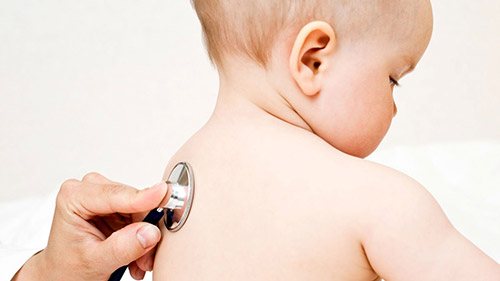
A dry cough is, first of all, dangerous because inseparable sputum accumulates in the lungs and the infection is not cleared from them. This condition can lead to serious consequences.
A barking cough can be a sign of a serious condition that can be fatal. Immediate medical attention is needed if your child develops a dry cough and a number of other symptoms:
- breathing accompanied by wheezing;
- severely irritated throat;
- fainting, lethargy;
- difficulty breathing, swallowing, speaking (attacks of suffocation);
- excessive salivation;
- cyanosis - blueness of the skin, lips, nails;
- muscle weakness;
- purulent and bloody discharge when coughing;
- hoarseness or loss of voice;
- resistance to treatment.
An immediate visit to a pediatrician to determine the true cause of the cough and timely, systematic treatment will prevent the development of complications. Severe consequences of a long-term nonproductive cough can include pneumothorax, laryngeal stenosis, occlusion, and even death caused by respiratory arrest.
Help and action from adults
What to do if a baby has a cough that interferes with normal sleep, feeding and well-being is decided by the doctor, with whom you should make an appointment immediately when symptoms appear. Most children tolerate croup normally without complications.
But some are at risk:
- premature babies;
- asthma patients;
- with lung disease.
If your baby has a cough, call your pediatrician or go to the clinic for an appointment.
You should not hesitate while waiting for the doctor to arrive if your child has:
- trouble breathing, shallow, rapid or difficult;
- retraction, a condition in which the skin collapses between the ribs when inhaling;
- noise and whistling when taking air into the lungs;
- pallor, blue discoloration of the nasolabial triangle;
- increased salivation;
- difficulty swallowing;
- a state of lethargy in which it is difficult to wake the baby;
- dehydration (lips and mucous membranes are dry, eyes are sunken, no or scanty urine output for 8 hours).
Basic principles of treatment
Self-medication of a barking cough in a newborn is unacceptable. When this protective reflex appears in a baby, you should definitely seek advice from a pediatrician, since it can be physiological (an indicator of normality), as well as evidence of the development of a serious pathology.
However, parents can alleviate the baby’s condition when a dry cough appears. To do this, you must use the following recommendations from experts;
- Regular (at least twice a day) ventilation of the room and maintaining the air temperature within 20-22 degrees Celsius.
- Maintaining an optimal level of humidity (especially during the heating season) using a humidifier or improvised means. For example, placing containers of water on the radiator, hanging wet sheets, spraying with a spray bottle.
- Compliance with drinking regime. To prevent dehydration, you need to give your baby something to drink often (especially if the body temperature is high). It is worth giving preference to drinking water, juices, fruit drinks, and herbal tea.
- Regular walks in the fresh air are beneficial as they help open the lungs.
- Light massage stroking the back will help improve sputum separation.
- Inhalation with a nebulizer in the absence of fever. Saline solution (5 ml) is ideal as a solution for inhalation. Inhaling saline will moisten the mucous membranes of the respiratory tract and reduce the viscosity of sputum.
If a barking cough is accompanied by a febrile temperature, the child is usually hospitalized and prescribed drug therapy.
Medicines
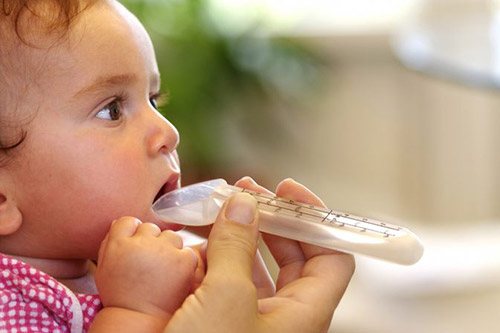
What medications can be used to treat barking cough in an infant? This question is of great concern to the parents of the baby, since at this age the list of acceptable medications is limited.
Pediatricians mainly prescribe drops and syrups to infants as the safest and most convenient form of medication.
When treating barking cough in a newborn, the following groups of medications are used.
Antitussives
Designed to suppress the cough reflex, they are excellent for combating paroxysmal, obsessive, unproductive coughs. From the age of two months you can use Sinekod. The dosage depends on the child's weight. The medicine is taken under medical supervision.
Mucolytic drugs
Prescribed to thin viscous mucus in the respiratory tract. The main active ingredients of mucolytics are ambroxol, acetylcysteine, bromhexine. Frequently prescribed syrups include Ambrobene, Lazolvan, Flavamed, Abrol, Mukolic, Fluditek and others.
Expectorants
Used after the cough has subsided and sputum has been released. These drugs help cough up sticky mucus. For children under one year of age, plant syrups made from extracts of ivy and plantain, as well as marshmallow, anise, licorice, thyme, thyme, coltsfoot and others are used. The most famous herbal cough syrups are Pectolvan Ivy, Prospan, Gedelix, Alteika, Linkas, etc.
The above medications can be given to the baby only in the dosage prescribed by the doctor. You cannot increase the dose on your own. It is also unacceptable to take expectorants and antitussives at the same time, since this combination is dangerous.
Folk remedies

It is not advisable to treat a barking cough in a newborn with folk remedies. Alcohol, vinegar and mustard compresses are contraindicated for up to a year, as they can cause burns and allergies in the form of urticaria and bronchospasms. The use of multicomponent herbal preparations is not permitted.
If the cough reflex is accompanied by redness of the throat, you can give the baby a chamomile decoction. It is allowed to buy ready-made sachets, as well as prepare the decoction yourself. For this, 1 tsp. pour a glass of boiling water over the flowers, leave for half an hour, filter and give 2-3 teaspoons up to 6 times a day.
A procedure such as drainage massage is great for dry coughs. It can be performed at home. The technique is as follows:
- place the baby tummy down on your lap so that the head is lower than the body;
- stroke the back with circular movements, avoiding the spine area;
- Use the edge of your palm to perform intense pats and taps, moving from the lower back to the shoulder blades;
- After repeating the tapping several times, place the child upright so that he has the opportunity to clear his throat.
You can repeat the drainage massage several times a day.
Preventive actions
Preventative measures that parents should follow will help prevent the occurrence of colds and bouts of barking cough in infants:
- Hardening procedures. It is advisable to accustom a child to them from the first days of life. Water procedures and air baths are considered the most effective. Walks in the fresh air should be daily, and in warm weather - repeated. The main thing is not to overheat the baby: try to choose clothes correctly. Pouring your feet with cool water every day has a good effect. In the summer, allow your baby to walk barefoot. In winter, the following procedure is useful: soak a towel in a saline solution (1 liter of warm water per 1 tablespoon of salt), wring it out well, spread it on the floor and let the baby (with your help) walk on the towel. After this, rub your feet - this stimulates the immune system.
- Do not smoke in the presence of a child; tobacco smoke can cause allergies.
- If you have an allergic cough, avoid contact with irritants.
- Avoid visiting crowded places during viral epidemics.
- Strengthen your immune system. The domestic drug Derinat will help with this, promoting the production of its own interferons that suppress pathogenic microflora. It can be dripped into the nose from the first days of a baby’s life. The action of Interferon and Laferbion is similar.
- Monitor the baby’s nutrition, and when breastfeeding, the mother’s nutrition. It should be complete, enriched with vitamins. It is allowed to take a multivitamin course.
Remember that only a doctor can prescribe the dosage and method of using cough medications for an infant. Self-prescription (especially folk remedies) is unacceptable, as it can provoke an allergic reaction and cause complications.
Unreasonable chest spasms
It is much more difficult to choose the right treatment for a dry barking cough that is not accompanied by fever. It happens that the baby coughs, but other than irritation of the larynx, he does not complain about anything. In this case, first of all, you need to make sure that the child does not choke on a small toy or food. The next step should be to humidify the air. Often this reason becomes the main source of an unpleasant symptom.
After this, you should exclude the possibility of an allergic reaction to external irritants. A “barking” cough in a child with an incorrect response from the immune system is usually accompanied by a runny nose (snot), headache and conjunctivitis. It is important to give the patient antihistamine tablets in a timely manner and to relieve swelling of the larynx using a special aerosol for bronchial asthma.
Advice from Dr. Komarovsky

Famous Dr. E.O. Komarovsky is convinced that when a cough reflex appears in a child, it is not the cough that should be treated, but the reason that prompted it. Until the cause of the cough reflex is eliminated, it will not go away.
Therefore, the main task of parents is to identify the cause and create conditions that ensure the elimination of cough. For physiological reasons, increase air humidity; for allergic reactions, reduce the reaction to the allergen; for viral ones, wait for the body to form antiviral immunity.
E.O. Komarovsky allows the use of medications, but on the condition that the prescription was made by a specialist - a pediatrician. Therefore, he advises a clear division of roles: the doctor must look for and eliminate the cause of the cough, identifying conditions when it is impossible to do without medications, and parents must create conditions for the body to effectively fight cough and the action of medications.
Parents should remember that the fight against barking cough must be comprehensive: medications will not be effective if the room is not ventilated, the humidity level is not controlled, and the drinking regime and other recommendations given in this article are not followed.
Treatment
When a baby has a cough: what to do and how to help can only be determined by a doctor. He will accurately determine the cause and prescribe effective medications to thin the mucus and improve the baby’s condition. Parents should not take any steps on their own and decide what is allowed for cough in infants and what is not.
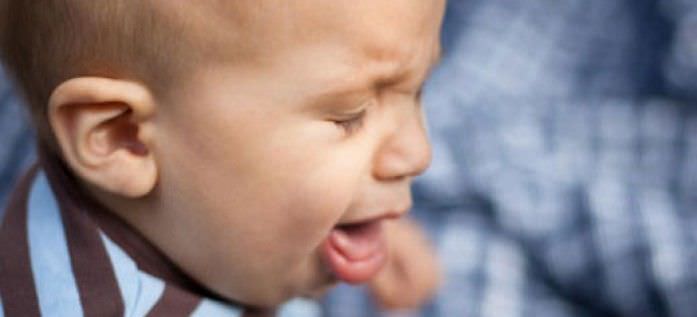
Cough exhausts the child
The instructions for the medicine are not a prescription, but only information for the patient. The price of drugs has nothing to do with their effectiveness, so trust your doctor to make a diagnosis and prescribe cough medicines for infants.
After establishing the reason that provoked its appearance, tactics of behavior are developed. In addition to prescribing medications, it is important to tell the child’s parents in detail how they can alleviate his condition and speed up the recovery process.
A baby often develops a cough from drool; in this case, take care of a small pillow or cushion that is placed under the baby’s head to avoid the accumulation of saliva and a subsequent coughing attack. A combination of methods will help the child’s body quickly recover.
Massage
Rubbing a baby when coughing is an effective procedure that is performed by a physiotherapist or parents after detailed instructions. Rubbing movements on the skin increase blood circulation, stimulating the function of the lungs and bronchi. Special ointments and creams make it easier for your hands to glide and at the same time warm the surface of the skin.
Inhalations
Provide additional hydration of the mucous membrane, help thin the mucus and facilitate its discharge. The presence of chamomile essential oils reduces the number of bacteria, and the alkaline solution accelerates the dissolution of sputum. There is little scientific evidence in favor of steam inhalation, so the decision is made together with your doctor.
Drinking regime
Make sure your baby receives breast milk and water regularly. This will help keep your mucous membranes hydrated, which will reduce their tendency to become irritated.
Medicines
A liquid preparation with paracetamol can provide a more comfortable feeling and relief from fever and pain. Children can take such medications after 2 months and provided that they were born on time and at normal weight.
Advice - be sure to discuss with your doctor the rules for taking and dosage of the medicine.
Do not give your baby medications to suppress coughing or reduce swelling. This will make the condition worse and will not help treat croup.
Care
If your baby is crying and upset, the cough may get worse. Provide comfort to the baby, calm him down with hugs and kisses. Keeping him upright in a semi-sitting position on your lap or leaning him against your shoulder can help him relax and make breathing easier.
Moms are wondering if it’s possible to bathe a baby when they have a cough? Perhaps, you should refrain from a full procedure until complete recovery, but this does not exclude daily hygiene measures.
Being in a bathtub with plenty of steam will allow your baby to breathe easier and relieve inflammation symptoms. When carrying out this procedure, be careful and monitor the baby’s condition.
You should not give up walking; breathing cool air will not harm your child. Dress your baby warmly and take him outside for a short walk (10-15 minutes). At night, try to stay close to your child to immediately calm him down and help him during a coughing attack.

Photos and videos in this article are dedicated to coughing
